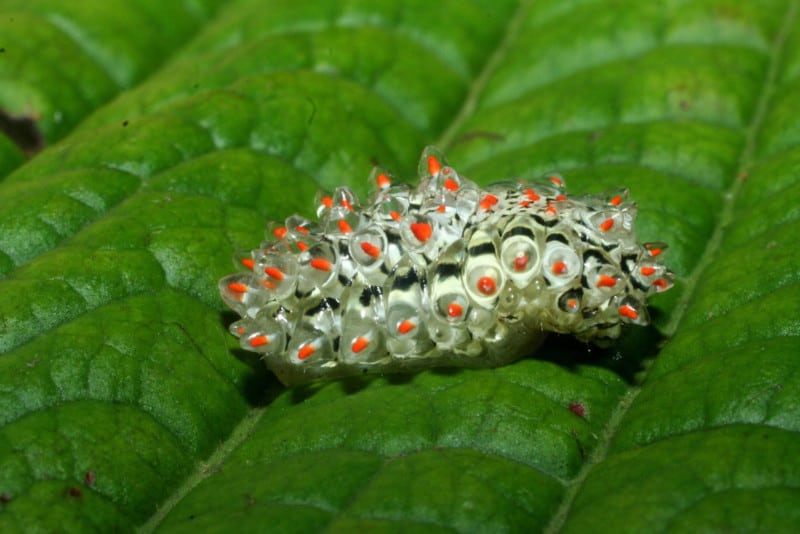
Jewel Caterpillar Facts
- The gorgeous Jewel Caterpillar, a member of the Dalceridae family, is the incredibly beautiful and translucent larval stage of the Acraga coa.
- Currently, scientists still know very little about either the caterpillar stage of the species or its adult counterpart.
- The brilliant color of the many spiny protuberances appears in contrast to the virtually transparent body.
- This serves as a visual warning to both would-be predators and also many other potential enemies living in the rainforest.
Related Articles
Jewel Caterpillar Physical Description
Regardless of its majestic beauty, the Jewel Caterpillar nevertheless ranks as a rather small species.
On average, individuals rarely attain an overall length of more than an inch (2.5 cm) in length.
This small insect also evolved a covering consisting of numerous spiny protuberances.
In addition, these evolved to be easily detachable, and break off quite easily when contacted.
The entire body appears glass-like, except for the small protuberances, which appear reddish-orange.
- Kingdom: Animalia
- Phylum: Arthropoda
- Order: Lepidoptera
- Family: Dalceridae
- Genus: Acraga
- Species: A. coa
Jewel Caterpillar, Distribution, Habitat and Ecology
The breathtaking Jewel Caterpillar represents a fuzzy orange moth native to Mexico, Costa Rica and several Caribbean islands.
The tiny body of the Dalceridae also remains slightly toxic and despite its glass-like appearance, the bodies have a gelatinous consistency.
That rather surprising trait literally helps to gum up the mandibles of attacking insects.
The bellies, however, remain much more vulnerable. At times, parasitic fly maggots can enter the caterpillar’s body from there and just reside inside forever until they eventually kill the small but beautiful caterpillar.
Most of the few individuals found so far have all been seen in the mangrove forests of South America and Central America. The animal so far appears to especially like the red mangrove tree leaves.
Species Sharing Its Range
Check out our other articles on 4 Remarkable Louisiana Reptiles, Stinging Nettle Caterpillar, Karner Blue Butterfly, Pellucid Hawkmoth, Fall Webworm, Giant Otter, Colorado Columbine
